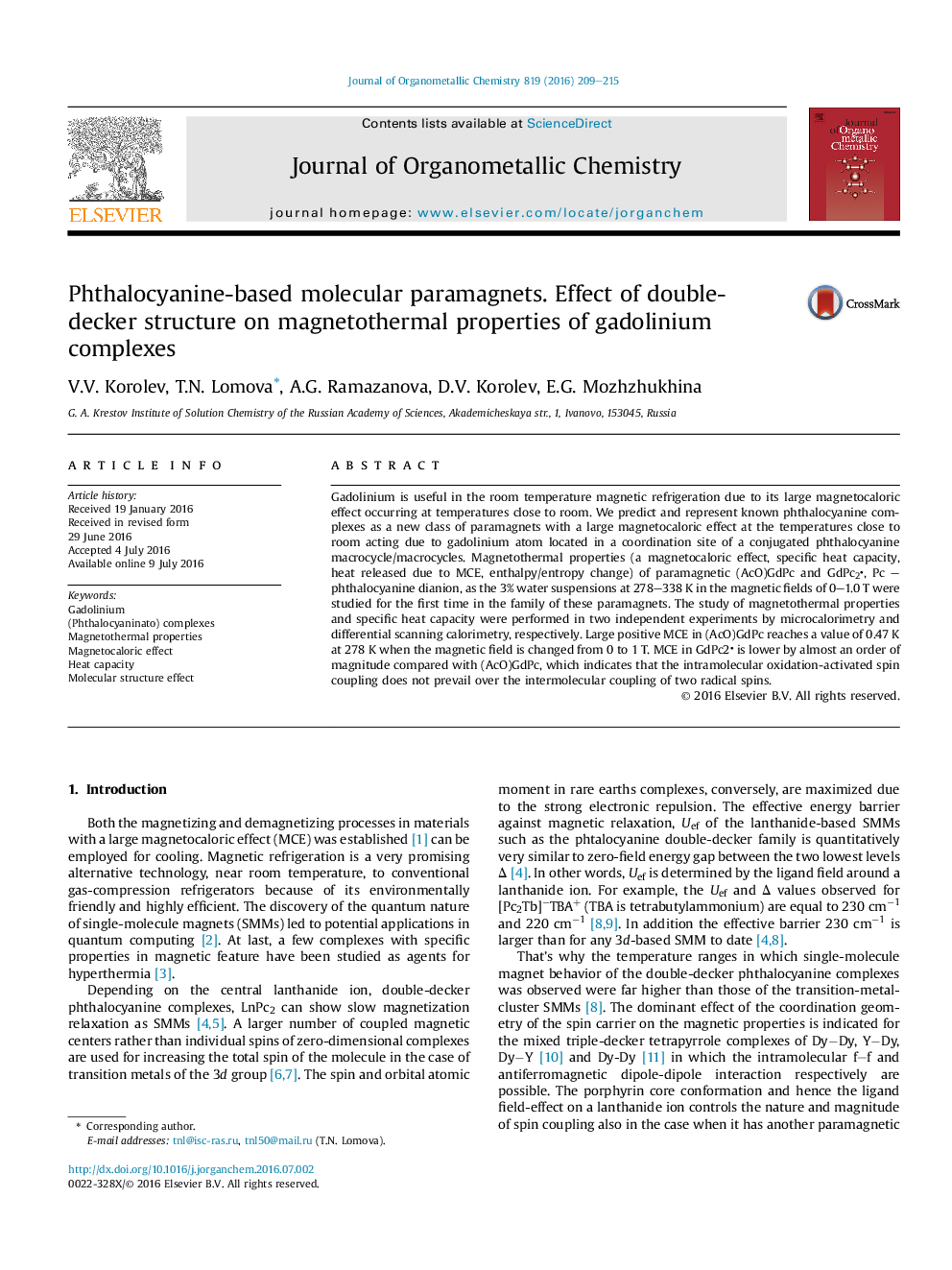| کد مقاله | کد نشریه | سال انتشار | مقاله انگلیسی | نسخه تمام متن |
|---|---|---|---|---|
| 1324469 | 1499827 | 2016 | 7 صفحه PDF | دانلود رایگان |
• Magnetothermal properties of gadolinium(III) single/double-decker phthalocyanine were obtained for the first time.
• Magnetocaloric effect in (AcO)GdPc 0.47 K 0–1 T 278 K is only slightly lower than one in 3d-4f clusters/homo-metallic gadolinium at 0–7 T.
• The intramolecular oxidation-activated spin coupling does not prevail over the intermolecular coupling of radical spins in GdPc2.
Gadolinium is useful in the room temperature magnetic refrigeration due to its large magnetocaloric effect occurring at temperatures close to room. We predict and represent known phthalocyanine complexes as a new class of paramagnets with a large magnetocaloric effect at the temperatures close to room acting due to gadolinium atom located in a coordination site of a conjugated phthalocyanine macrocycle/macrocycles. Magnetothermal properties (a magnetocaloric effect, specific heat capacity, heat released due to MCE, enthalpy/entropy change) of paramagnetic (AcO)GdPc and GdPc2, Pc – phthalocyanine dianion, as the 3% water suspensions at 278–338 K in the magnetic fields of 0–1.0 T were studied for the first time in the family of these paramagnets. The study of magnetothermal properties and specific heat capacity were performed in two independent experiments by microcalorimetry and differential scanning calorimetry, respectively. Large positive MCE in (AcO)GdPc reaches a value of 0.47 K at 278 K when the magnetic field is changed from 0 to 1 T. MCE in GdPc2 is lower by almost an order of magnitude compared with (AcO)GdPc, which indicates that the intramolecular oxidation-activated spin coupling does not prevail over the intermolecular coupling of two radical spins.
Figure optionsDownload as PowerPoint slide
Journal: Journal of Organometallic Chemistry - Volume 819, 15 September 2016, Pages 209–215
